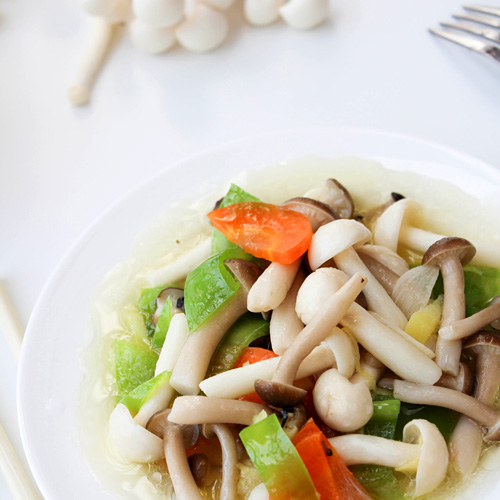Shimeji (Japanese: シメジ, 占地 or 湿地) is a group of edible mushrooms native to East Asia, but also found in northern Europe. Hon-shimeji (Lyophyllum shimeji) is a mycorrhizal fungus and difficult to cultivate. In a pan over medium heat, add in the oil and the mushrooms and cook until they have softened and browned slightly. Add in the onions and continue to cook until the onions become translucent. Add in the water, soy sauce and mirin and bring the mixture to a boil before reducing to a simmer and allowing to cook for about 10 mins.
- Shimeji Mushroom Recipe Chinese
- Shimeji Mushroom In Chinese Character
- Shimeji Mushroom In Chinese Language
| Hypsizygus tessellatus | |
|---|---|
| Scientific classification | |
| Kingdom: | Fungi |
| Division: | Basidiomycota |
| Class: | Agaricomycetes |
| Order: | Agaricales |
| Family: | Lyophyllaceae |
| Genus: | Hypsizygus |
| Species: | |
| Binomial name | |
| Hypsizygus tesselatus (Bull.) Singer (1947)[1] | |
| Synonyms | |
| |
Hypsizygus tesselatus (Buna shimeji) is an edible mushroom[2] native to East Asia. It is cultivated locally in temperate climates in Europe, North America and Australia and sold fresh in super markets. In nature, shimeji are gilled mushrooms that grow on wood. Most often the mushroom is found on beech trees, hence the common name, beech mushroom. They are often small and thin in appearance and popular in many nations across the world.[3]
Two variations are known:
- Buna-shimeji (ja:ブナシメジ), Hypsizigus tessellatus, (Brown Beech Mushroom , Beech Mushroom, BeechBrown Clamshell Mushroom);
- Bunapi-shimeji (ja:ブナピー), (White Beech Mushroom, White Clamshell Mushroom); bunapi was selected from buna-shimeji and registered by Hokto Corporation.
Cooking[edit]
Being tough when raw,[4] the Shimeji should be cooked, having a bitter taste when raw which disappears completely upon cooking. The cooked mushroom has a firm, slightly crunchy texture and a nutty flavor. Preparation makes the mushroom easier to digest. It is often eaten with stir-fried foods including wild game and seafood. It is used in soups, stews and sauces. When prepared alone, Shimeji mushrooms can be sautéed as a whole, including the stem or stalk (only the very end cut off), using a higher temperature; or, they can be slow roasted on a low temperature with a small amount of butter or cooking oil. Shimeji is used in soups, nabe and takikomi gohan.
Gallery[edit]
Wild species. (Japan.)
Bunapi (Hokto Ltd. develops)
See also[edit]
References[edit]

Shimeji Mushroom Recipe Chinese
- ^http://www.mycobank.org/name/Hypsizygus%20tessulatus&Lang=Eng
- ^ abcMiller Jr., Orson K.; Miller, Hope H. (2006). North American Mushrooms: A Field Guide to Edible and Inedible Fungi. Guilford, CN: FalconGuide. p. 156. ISBN978-0-7627-3109-1.
- ^'Brown Beech Mushroom - Hypsizygus Tesselatus.' Brown Beech Mushroom - Hypsizygus Tesselatus. N.p., n.d. Web. 06 Dec. 2014.
- ^Phillips, Roger (2010). Mushrooms and Other Fungi of North America. Buffalo, NY: Firefly Books. p. 238. ISBN978-1-55407-651-2.
External links[edit]
Shimeji Mushroom In Chinese Character
- Honshimeji Mushroom, RecipeTips.com. Brown Beech (Buna shimeji), White Beech (Bunapi shimeji), and the Pioppino (Agrocybe aegerita) mushrooms.
- Bunashimeji and Bunapi, Hokuto Corporation.